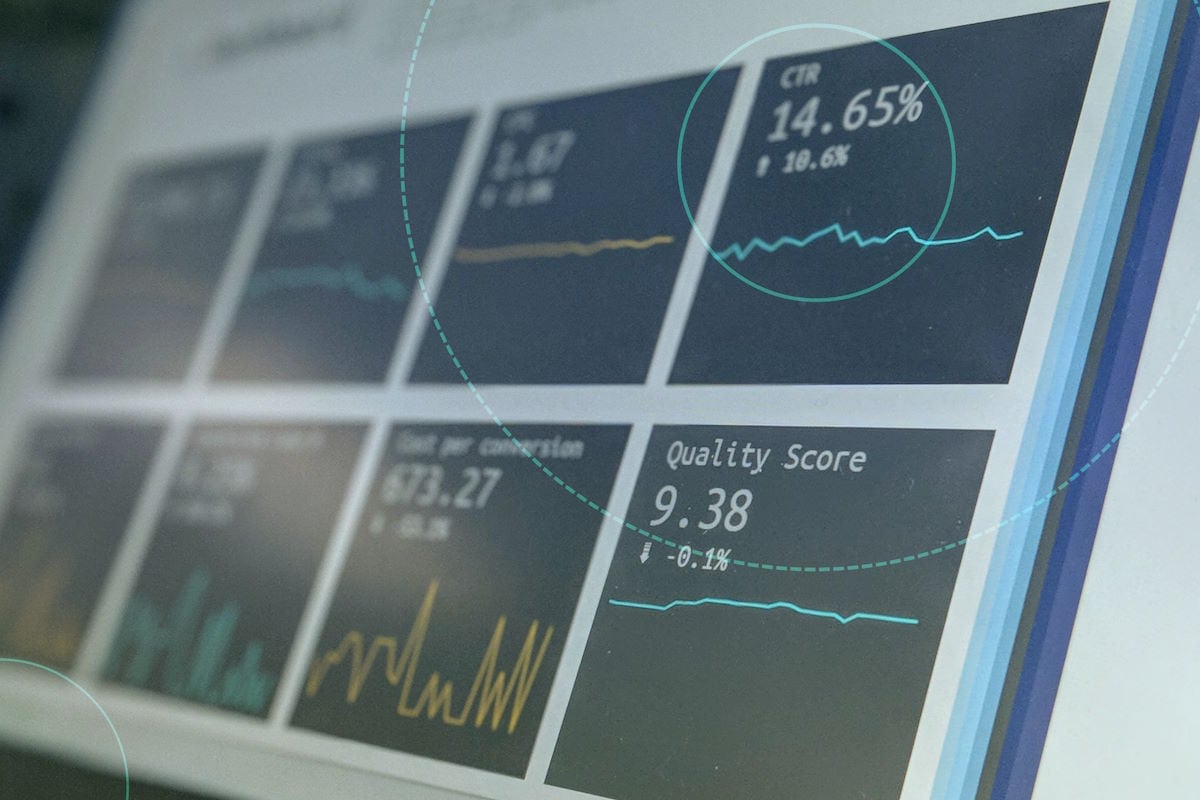The use of data analytics to plan and organize marketing efforts is emerging as a game-changer for the constantly evolving B2B marketing landscape.
This blog will review the critical role that B2B marketing metrics and data analytics play in shaping successful marketing strategies and meeting B2B marketing Key Performance Indicators (KPIs).
In an era where data reigns supreme, understanding how to harness its power is essential for B2B companies seeking to gain a competitive edge, boost their total number of new leads, and keep cost-per-lead (CPL) to a minimum.
B2B Marketing Metrics and the Data Revolution
Gone are the days when marketing decisions were based on gut instincts and educated guesses.
Today, data analytics are ushering in a new era of precision and insight. B2B marketers have access to an abundance of data sources, including website and Google analytics, customer relationship management (CRM) systems, social media metrics from platforms like LinkedIn, and more.
This wealth of data can be harnessed to inform and optimize every aspect of your B2B marketing strategy, from assessing customer lifetime value (CLV) to generating industry benchmarks for the number of leads you gather.
Refining Your B2B Marketing Strategy With Data Metrics
Here are some ways you can use B2B marketing metrics to build and manage effective campaigns and optimize your bottom line.
Understanding Your Audience
Fully understanding your audience inside and out is one of the most fundamental principles for creating effective B2B marketing efforts. Using marketing metrics and data analytics empowers you to do just that.
Analyzing demographic data, behavior patterns, and engagement metrics will allow you to gain a deep understanding of your target audience's preferences, pain points, and needs.
With this knowledge, you can tailor your messaging, content, and offerings to resonate with your ideal potential customers, increasing the likelihood of capturing new customers and converting marketing qualified leads (MQLs) to sales qualified leads (SQLs).
It also enables you to effectively segment your audience to ensure you deliver the right message to the right people at the right time with the lowest possible new customer acquisition cost (CAC). Understanding how to optimize your marketing spend while knowing whether to send B2B sales prospects to landing pages or social posts can all be powered by marketing metrics and data analytics.
Reaching the Right Target Audience
Understanding your target audience is one thing, and reaching them to generate a higher number of new customers is another. However, targeting and retargeting efforts are more than one-and-done; these processes are ongoing and vital for generating sales leads and accelerating the sales pipeline.
There are a few best practices that you can leverage to define and reach high-value B2B target audiences:
-
Retargeting Segments: Set up retargeting segments for every one of your website visitors. Using automation to retarget "warm" prospects who have visited your website is a proven tactic for boosting conversion rates and moving the sales process forward.
-
List Research: Research and purchase lists of B2B businesses categorized by funding levels (e.g. series A, B, etc.) or by industry verticals (e.g. travel, fintech, SaaS, etc.). This process will yield a list of target audience-specific B2B companies to focus your efforts on. Some marketing agencies may offer these services.
Personalization and Customization
Personalization has become a cornerstone of modern marketing, and data analytics are the key to unlocking personalization’s potential. Growing monthly recurring revenue and reaching marketing success is made easier with effective personalization efforts that boost the retention of happily paying customers.
By analyzing user behavior and historical data, you can create highly personalized marketing campaigns that speak directly to individual, high-value prospects.
For example, you can send personalized email marketing that recommends products or services based on a potential customer’s previous interactions with your brand. This level of personalization enhances the customer experience while boosting lead conversion rates and customer loyalty which helps jumpstart the sales cycle.
Optimizing Campaign Performance
Data analytics provide real-time insights into the performance of your B2B marketing campaigns.
Your marketing team can track metrics like click-through rates, conversion rates, and return on investment (ROI) to gauge the effectiveness of your marketing efforts.
These insights enable B2B marketers to make real-time, data-driven adjustments to their campaigns.
For instance, if you notice that a particular ad is underperforming, you can modify its content or targeting parameters to improve its effectiveness. The same goes for an underperforming piece of content marketing or a blog on your website. Review the metrics, check on your keyword performance, and leverage strong search engine optimization (SEO) practices to drive views, clicks, and conversions.
This iterative process of optimization is essential for maximizing your marketing ROI.
Predictive Analytics
Predictive analytics takes data analysis to the next level by using historical data to forecast future trends and outcomes.
By identifying patterns and trends in your data, you can anticipate market shifts, customer behavior, and emerging opportunities for your industry and B2B marketing efforts.
For example, predictive analytics can help you identify attribution channels from which leads are most likely to convert into customers, allowing you to prioritize your sales team’s efforts effectively. It can also assist in inventory management, demand forecasting, and product development.

The Power of Outcome-Based TV and Data Analytics
While digital marketing channels have been at the forefront of data analytics in B2B marketing, it's crucial to recognize the complementary role that Outcome-Based TV can play. TV advertising, when integrated with data analytics, offers unique benefits for your marketing teams and their mission to meet and exceed your B2B marketing KPIs.
1. Enhanced Audience Targeting
Use data analytics to identify high-value B2B prospects, and then leverage precision targeting with Outcome-Based TV to reach them. This one-two combination boosts your marketing performance by allowing you to extend your reach beyond digital channels and engage decision-makers through TV advertising.
2. Data-Driven Insights
Outcome-Based TV provides valuable data on viewer behavior and engagement, including website traffic, contact us/information requests, etc.
This data can be integrated with your overall analytics strategy to create a comprehensive view of your audience's sales funnel journey, from TV exposure to digital interactions.
3. Multi-Channel Integration
Seamlessly integrate your TV advertising efforts with your digital marketing initiatives. Use data analytics to measure the impact of TV ads on website visits, conversions, and lead generation.
4. Measuring TV ROI
Data analytics help you determine the ROI of your TV advertising efforts by tracking the influence of TV exposure on digital conversions. This means your marketing teams can effectively quantify the value of your TV ad spend.
Marketing Metrics, Data Analytics, and the Future of B2B Marketing
Data analytics have become an indispensable tool for B2B marketers seeking to thrive in today's data-driven landscape.
By harnessing the power of these key metrics, you can gain deep insights into your audience, personalize your marketing efforts, optimize campaign performance, and even predict future trends. When integrated with Outcome-Based TV, data analytics takes your B2B marketing strategy to new heights, offering enhanced audience targeting and measurable results.
Embrace the data revolution, and position your business for success in the ever-evolving world of B2B marketing.






